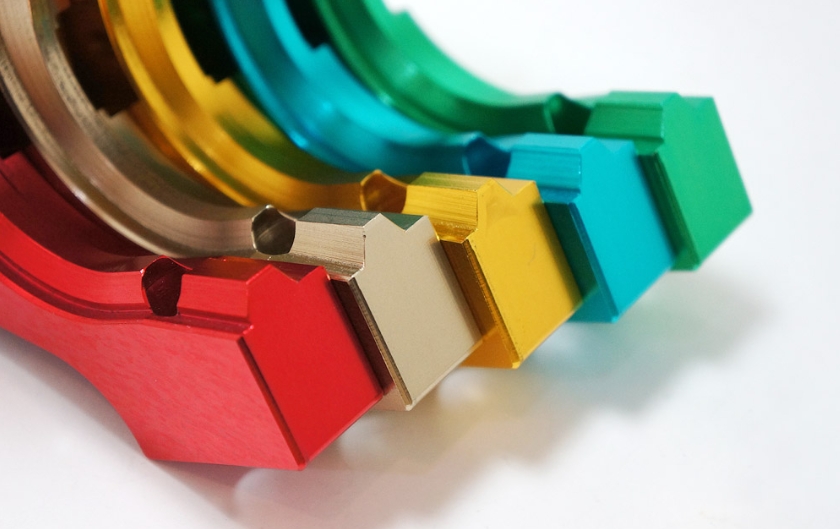Weight: Aluminium is extremely light weight – about 1/3 of that of copper or steel. Excellent for use in the transportation industry, this may help reduce fuel costs.
Strength: Aluminium is extremely light weight – about 1/3 of that of copper or steel. Excellent for use in the transportation industry, this may help reduce fuel costs.
Conductivity: Aluminium is an excellent electrical conductor and is the most popular material for use in power transmission cables. Aluminium also has high thermal conductivity, and is often used for auto mobile engine parts and industrial heat exchangers, as well as radiator tubing and electronic heat sinks.
Reflectivity: Aluminium is highly reflective, making it an ideal material for applications such as light fittings, especially if polished and anodized.
Corrosion Resistance: Aluminium corrosion resistance makes it a good choice of material for use in the construction and buildings industry, or even in a marine environment. And anodizing or powder coating can further protect the aluminium, which also provides a decorative finish.

Cutting aluminum is the first step in creating custom parts. Aluminum is a relatively soft metal, but the cutting process still requires the right tools and techniques to ensure precision and a clean finish. There are several methods used to cut aluminum, including: CNC Machining, Laser Cutting, Water Jet Cutting, etc.
Aluminium bending is a key process in manufacturing custom parts. Whether it's a simple angle or a more complex curve, bending aluminum requires skill and the right equipment to ensure the metal maintains its integrity. Including :Bending of Aluminium with Press Brakes, Roll Bending, Heat Bending, etc.
Welding aluminum is a critical skill in custom aluminum part manufacturing. Aluminum's low melting point and high thermal conductivity make welding a bit more challenging compared to other metals. Common welding methods for aluminum include:
TIG Welding (Tungsten Inert Gas Welding): TIG welding is the most commonly used method for welding aluminum. It uses a non-consumable tungsten electrode and a filler material to create strong, clean welds. TIG welding is particularly suitable for thin aluminum sheets and offers precise control over the weld.
MIG Welding (Metal Inert Gas Welding): MIG welding is faster than TIG and is often used for thicker aluminum pieces. It uses a consumable wire electrode and is less complicated than TIG, but it may require more cleanup afterward.
Anodizing: An electrochemical process that thickens the natural oxide layer on the surface of aluminum. This improves corrosion resistance and wear resistance. The process also allows for dyeing the aluminum, giving it a wide range of color options. Anodized aluminum is often used for architectural, automotive, and aerospace applications.
Powder Coating: Applying a dry powder to the surface of the aluminum, which is then heated to form a solid, durable coating. It provides a tough, high-quality finish that is resistant to scratches, fading, and chipping. Powder coating is used for both decorative and functional purposes.

Sandblast: Also known as shot peening or sandblasting, it is a destructive processing method for the surface of materials. It uses fine abrasive sand particles to impact the surface of the material, causing the surface to produce granular depressions to form a matte or eroded surface, thereby achieving the effects of removing rust, removing oxide layers, adjusting friction coefficients, adjusting precision, increasing adhesion, and improving the smoothness of the surface of the material.
Chemical Conversion Coating (Chromate or Alodine Coating): Using chemicals to create a protective layer on the surface of the aluminum. Chromate conversion coatings (like Alodine) are commonly used to improve corrosion resistance and provide a base for paint adhesion. This is widely used in the aerospace and automotive industries.
Electroplating: Electroplating is the process of depositing a metal coating, such as nickel or chrome, onto the surface of the aluminum by electrolysis. This is used to enhance the appearance and improve properties like hardness, wear resistance, and corrosion resistance.
Passivation: Passivation is a chemical treatment that removes contaminants from the surface of aluminum and enhances the natural oxide layer. It is typically used to increase corrosion resistance, particularly in aluminum alloys that will be exposed to harsh environments.
Brushing or Polishing: Brushing involves abrading the aluminum surface with abrasive materials to create a uniform matte finish, while polishing creates a high-gloss finish through a combination of abrasives and compounds. These treatments are used primarily for aesthetic purposes.